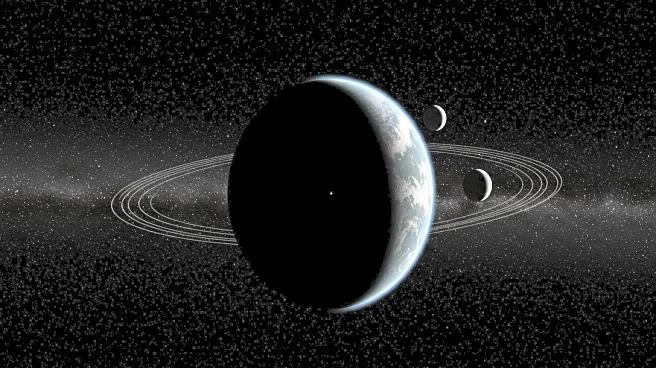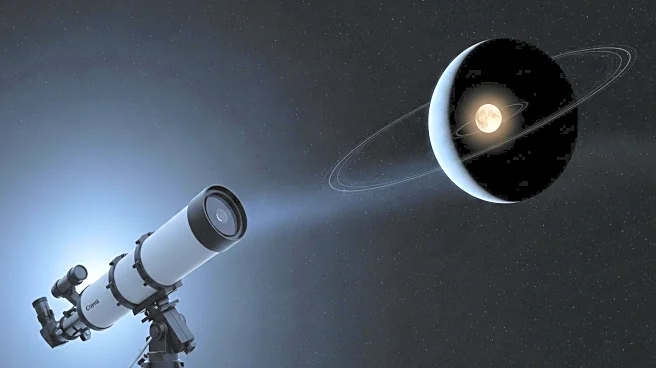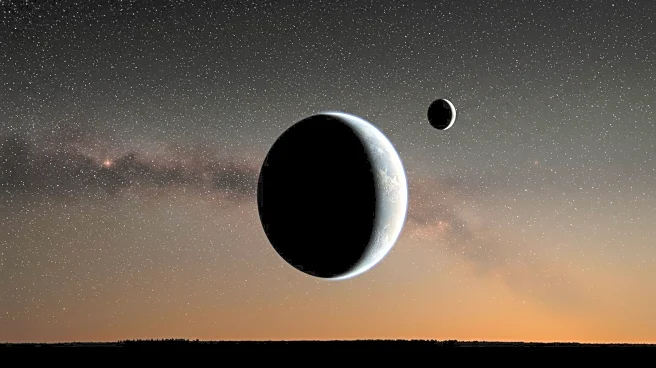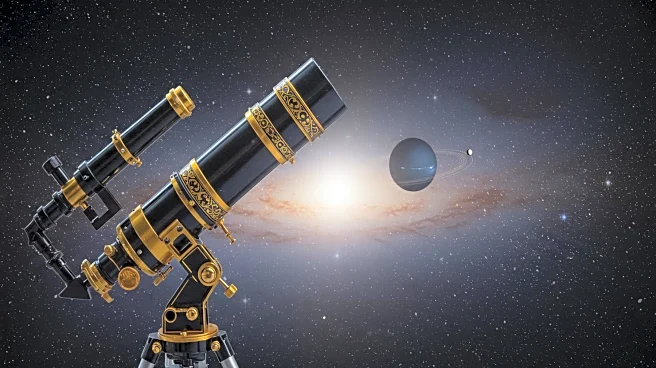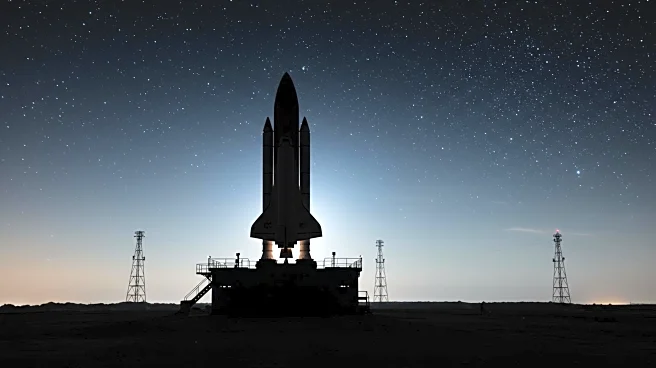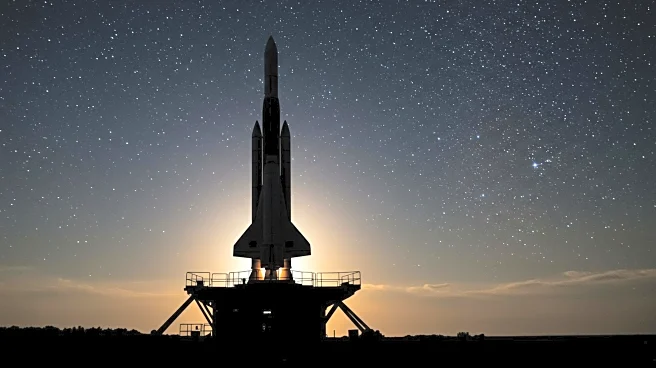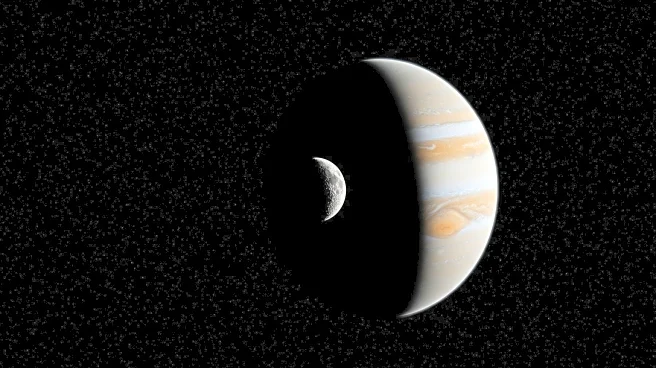What's Happening?
A new moon has been discovered orbiting Uranus, designated as S/2025 U1, which is approximately the size of San Angelo, Texas. The discovery was made on February 2, 2025, and announced in August 2025. Kenneth Carrell, Planetarium Director at Angelo State University, provided insights into the discovery, noting the moon's proximity to Uranus at about 35,000 miles from the planet's center. This distance is significantly closer compared to Earth's moon, which orbits at about 240,000 miles from Earth. The discovery was facilitated by advanced telescopes, including the James Webb Telescope, which has been instrumental in identifying smaller celestial bodies in recent years.
Why It's Important?
The discovery of S/2025 U1 adds to the growing list of known moons in our solar system, highlighting the advancements in astronomical technology and exploration. This finding underscores the capabilities of modern telescopes to detect distant objects, enhancing our understanding of planetary systems. The naming convention for Uranus' moons, typically derived from characters in Shakespearean and Pope's works, may be applied to this new moon, pending confirmation by the International Astronomical Union. Such discoveries contribute to the broader scientific knowledge of planetary formation and dynamics, potentially influencing future space missions and research.
What's Next?
The next steps involve the confirmation of S/2025 U1 as an official moon by the International Astronomical Union, which will also decide its formal name. Continued observation and study of this moon may provide further insights into its characteristics and the dynamics of Uranus' satellite system. The discovery may prompt additional research and exploration missions aimed at understanding the outer planets and their moons, potentially leading to new scientific breakthroughs.
Beyond the Headlines
The discovery of S/2025 U1 reflects the ongoing evolution of space exploration and the importance of international collaboration in astronomical research. It highlights the role of advanced technology in expanding our knowledge of the universe, fostering scientific curiosity and innovation. The naming process, rooted in literary traditions, also emphasizes the cultural dimensions of scientific discoveries, bridging the gap between science and the arts.


